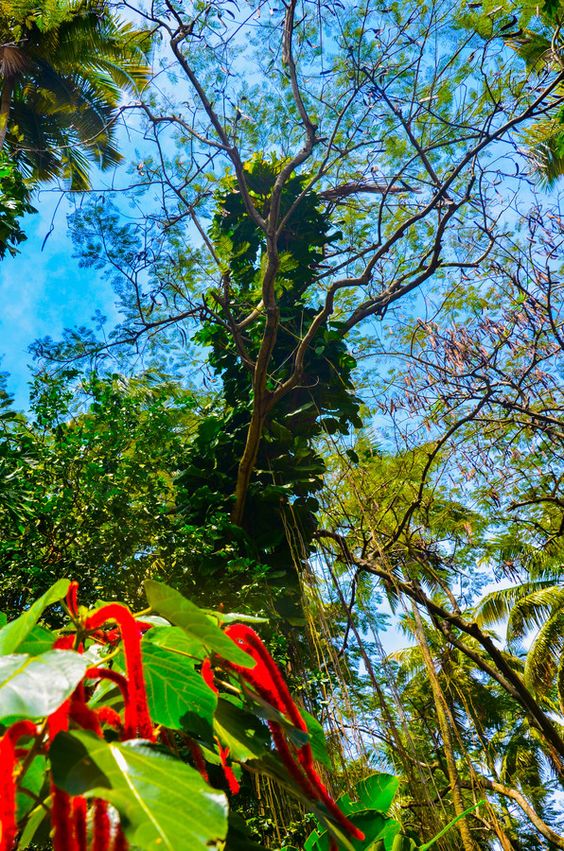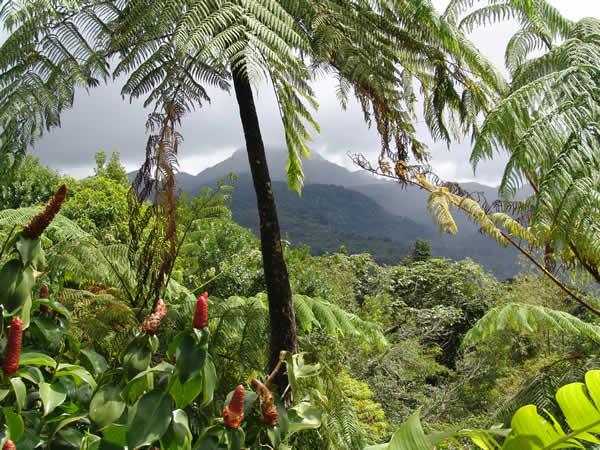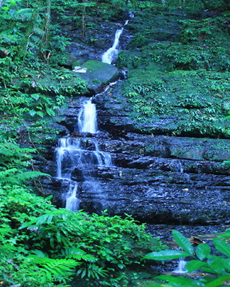 |
| Caribbean Flora |
The Caribbean region is noted for its diverse and varied vegetation. Flowers thrive in the moist, tropical environment found on many islands. Hibiscus, bougainvillea, and orchids are just a few of the varieties found there. The heavily touristed region faces challenges in balancing development with preserving its flora.
The Caribbean region comprises the islands from the Bahamas to Trinidad and is noted for its tropical vegetation and flowers. This region has been significantly affected by human activities.
Deforestation began with the development of sugarcane culture in the seventeenth century. When forests are cut for farmland, soil erosion and depletion often occur. Jamaica, Haiti, and many of the smaller islands have suffered acute ecological degradation.
  |
Thorn scrub and grasses have replaced native forests that were cleared for farming. This new vegetation does not protect the ground from the sun and provides little protection against moisture loss during drought. Livestock overgrazing also has contributed to ecological degradation.
However, these complex and fragile island ecosystems are finally being appreciated and protected. Most islands’ governments recognize that they must balance development with protection of the natural environment. Many have established active conservation societies and national wildlife trusts for this purpose.
Rain Forest
The only rain forest left in the Caribbean Islands is a small area in Guadeloupe. However, many of the islands still have large stands of good secondary forest that are being harvested selectively by commercial lumber companies.
Gommier, balata, and bluemahoe are some of the valuable species of trees cut commercially. Such tropical woods as cedar, mahogany, and palms grow on many islands. Martinique has some of the largest tracts of forest (rain forest, cloud forest, and dry woodland) left in the Caribbean.
 |
| Caribbean rain forest |
While the Caribbean rain forest is not as diverse as those of Central and South America, it supports numerous plant species. Several of these plants are endemic to the region. For example, Jamaica has more than three thousand species with eight hundred endemics.
Orchids and bromeliads are stunning examples of climbing and hanging vegetation in the rain forests of the Caribbean. Huge tree ferns, giant elephant ear plants, figs, and balsam trees are also found in these tropical island rain forests.
Plantations of commercial timber (blue mahoe, Caribbean pine, teak, and mahogany) have been established in many locations. These plantations reduce pressure on natural forest, help protect watersheds and soil, and provide valuable wildlife habitat.
Much of the original forests of the Caribbean have been cut down to make room for sugar plantations and for use as fuel. Haiti, once covered with forests, is now on the verge of total deforestation. Soil erosion and desertification have severely impacted the country.
Saint Kitts, on the other hand, is one of the few places in the world where the forest is actually expanding. It provides abundant habitat for exotic vines, wild orchids, and candlewoods.
Closer to the coasts, dry scrub woodland predominates. Some trees lose their leaves during the dry season. The turpentine tree is common to the dry scrub forests. It is sometimes called the tourist tree because of its red, peeling bark. The trees’ bark and leaves are often sold in marketplaces and used for herbal remedies and bush medicine.
 |
| Rain Forest |
Dominica, one of the windward islands, is known as the “nature island” of the Caribbean. Most of the southern part of the island (17,000 acres, or approximately 7,000 hectares) has been designated the Morne Trois Pitons National Park, which became a World Heritage Site in 1998. Elfin forests of dense vegetation and low-growing plants cover the highest volcanic peaks and receive an abundance of rain.
The trees, stunted by the wind, have leaves adapted with drip tips to cope with the excess moisture. Lower down, the slopes are covered with rain forest. Measures are being taken to protect this forest from cutting for farmland or economic gain because it is a valuable water source and a unique laboratory for scientific research.